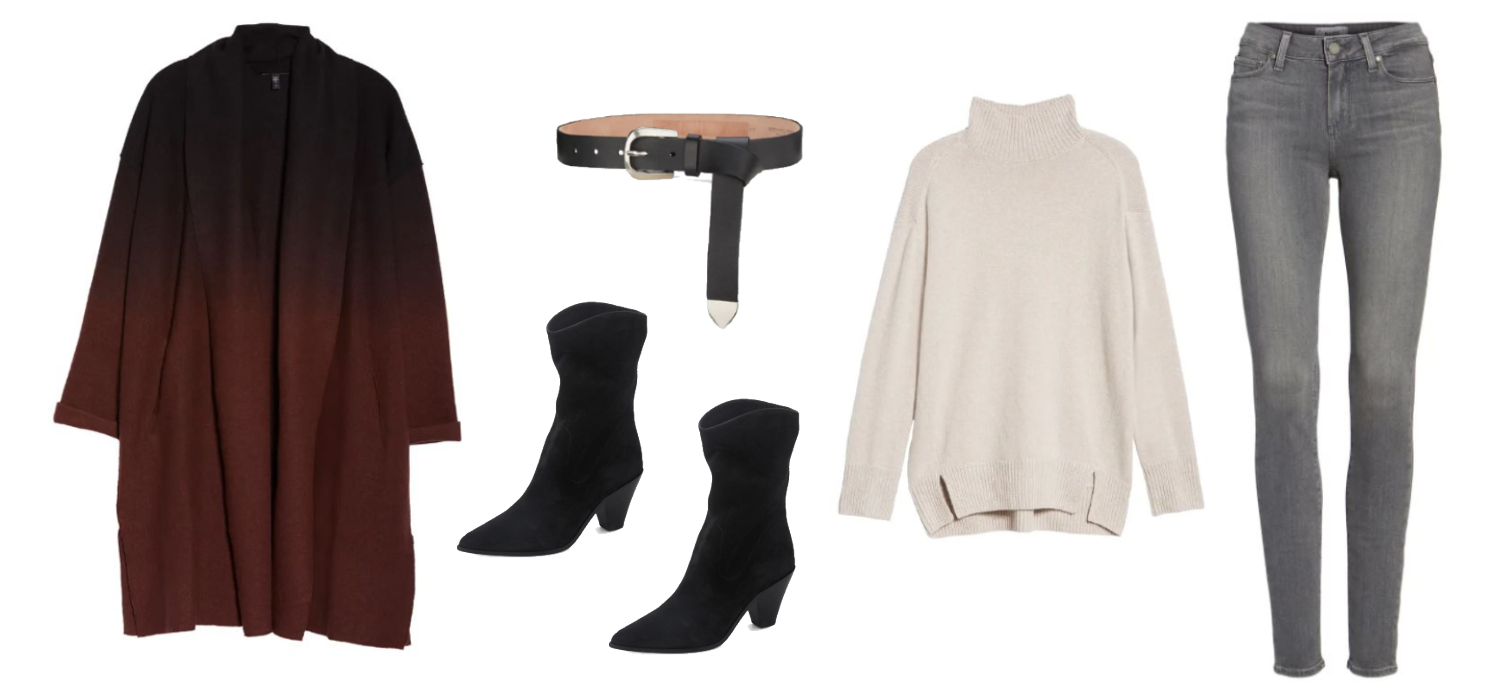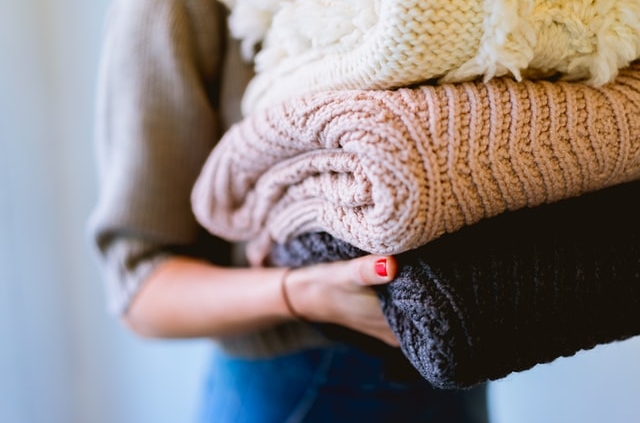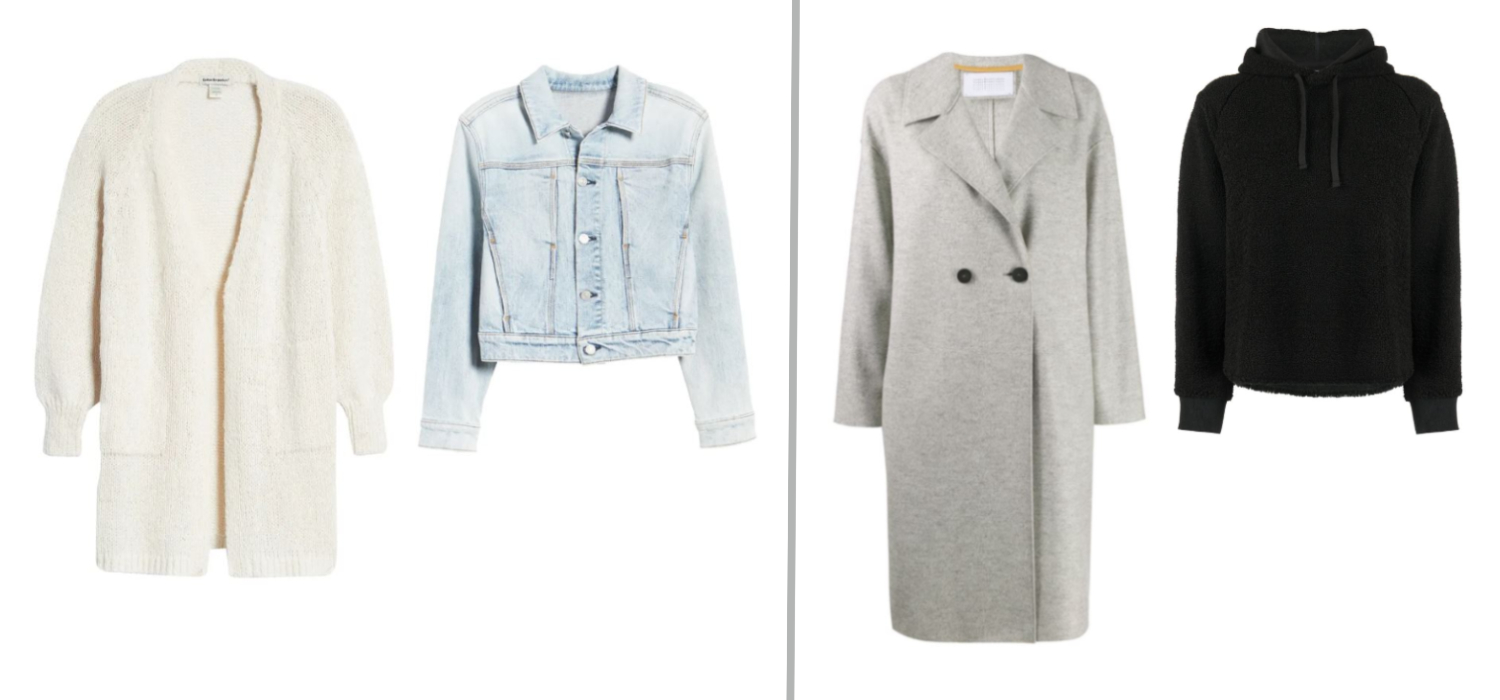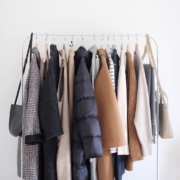Layering 101: How to Layer Clothes for Cold Weather
It’s important to know how to layer clothes for cold weather. It can feel like a bit of a balancing act to keep things flattering and practical. If done well, it’s the perfect way to assemble a nuanced and interesting look while staying cozy.
Old pieces that you’re tired of or the simplest basics can be reworked into a multifaceted outfit time and time again. It’s a great way to avoid the feeling that you have “nothing to wear” and must constantly buy new. Instead, find new ways to build a look with what’s in your closet now. This is especially important for those looking to pare down to a capsule wardrobe!
We all layer our clothes as the weather gets chilly: we throw on our everyday t-shirt and jeans, add a jacket, top it with a scarf and a beanie if the temperatures are really dropping…But, we don’t always select our layering pieces with intention.
It’s often done for function rather than for fashion. While layering is certainly functional—especially when the weather is this unpredictable–it is also a great opportunity to showcase your style.
So, how do you layer your favorite pieces in a functional AND fashionable way? Make sure to keep your eye on the impact of the finished look and how the outfit will look if you need to peel a layer or two off throughout the day.
Building Blocks: Start with a solid, simple base
If you feel lost with how to layer clothes for cold weather, the best place to start is with simple, versatile building blocks. Look for solid colors, neutrals, and clean silhouettes to start. In summer, this might be a white tee and distressed light wash denim on the bottom.
In the winter, you might translate this concept into a cream thermal and darker wash jean. They’re similar pieces, but with weather-appropriate adjustments in fabric type and silhouette. Always keep the season in mind! In the summer, it’s especially important to keep your fabric light so that you have the option to layer without overheating. In the winter, you can do multiple mid-weight layers if you plan to keep them on altogether all day, or just a few heavier layers if you don’t like to keep your outerwear on all the time.
Regardless of which layers you add on top, it’s best to start with clean basics that will pair seamlessly with subsequent pieces. Make it easy on yourself. Keep details minimal—a little goes a long way! Think a turtleneck neckline, a slight sheen in the fabric, a raw hem, or a slight crop to add visual interest.
If you start with a more detailed and elaborate base layer, choosing a second and third layer gets increasingly difficult. Busy patterns, multiple colors, voluminous ruffles, and unusual cuts are harder to work with and less versatile. Skip these for now while you learn how to layer clothes for cold weather.
Keep length in mind: Increase length as you move outward
After you have your base layer down, it’s time to add a mid-layer (or skip straight to outerwear!). You’ve already made it easy on yourself in terms of the color palate with your neutrals and/or solid base layer, so you can top the first layer with either more neutrals or a bright color without having to worry about clashing.
Instead, the main consideration as you build outward should be a silhouette. In particular, pay attention to length. A general rule of thumb is to go longer as you move outward. This could mean giving your tee or thermal a quick front tuck to define your waist, then adding a long cardigan or duster coat on top. This draws attention inward and toward your face for a balanced overall look!
Maybe it’s really cold outside and one piece of outerwear is not enough. Keep the same rule of length in mind. You can try adding a hip-length denim jacket under your long chunky cardigan or an unbuttoned flannel under your wool coat. Your outer layer doesn’t necessarily have to be the heaviest fabric for it to look proportionate, but length does tend to be more important.
For example, a lightweight trench coat can look great over a heavy knit sweater. For those overwhelmed by finding a base, mid, and outer layer whose silhouettes work well together, a hoodie makes an incredibly comfy and easy-to-style mid-layer that covers the base layer to simplify things. A gray hoodie looks so edgy under a leather jacket or a tailored wool coat!
Layering shorter pieces on top of longer pieces can work on occasion too, especially if you want to highlight the design of your inner layers. One way to do this is a cropped moto jacket over a patterned tunic top and leggings. However, shorter outer layers might limit the number of pieces you’re realistically able to add in a single look. For winter layering especially, I recommend sticking to shorter inner layers.
Finishing touches: Select your third pieces
Now that you know how to layer clothes for cold weather, the last step is to add accessories and finishing touches. If you haven’t already added an overcoat or third layer to tie everything together, now is the time to get that last piece in. The outermost layer is the perfect place to showcase a statement piece like a teddy coat.
Generally, this will be your warmest layer. Consider rounding out the look by adding a scarf to keep your neck warm and make the outfit pop, a stack of bracelets for some fun texture and color, or a belt to define your waist under all the bulky layers. A great way to do the belt is to wrap it around one of your thicker inner layers, like a knitted vest, to create structure. Wide belts will work best here. Don’t be afraid to belt even a jacket or coat!
If you’re feeling like you’re getting lost in all the layers of fabric, bring attention upward with a headband, beanie, or pair of earrings. Often, we stick to neutrals and darker tones for winter layering. A neutral monochromatic look can be a great strategy for creating a unified ensemble.
One of the most impactful finishing touches to complement these looks is a pop of bright color, such as a statement red lip. A vibrant finishing touch, whether a statement lip or a neon purse, is a fun and unexpected way to make your look stand out in the sea of dull winter colors we so often see. Because you are already wearing so many layers, too many accessories may sometimes become overwhelming. Stick to just a couple of pieces if in doubt.
Wrap Up
Don’t be fooled into thinking that winter means function now takes precedence over fashion. Once you understand how to layer clothes for cold weather, you can begin to create beautiful, harmonized looks with infinitely more depth and interest than a single-layer look.
By building with the basics, being mindful of layer lengths, and experimenting with finishing touches, layering will become an effortless and exciting way to showcase your unique style. If you’re ready to start layering but don’t have the outerwear to pull your looks together yet, get inspired by some of Alli’s favorite winter coats of the season, styled in a recent video before you go shopping.
Already have a full wardrobe but still looking for a little extra help pulling it all together? Set up a consultation to get styling.




